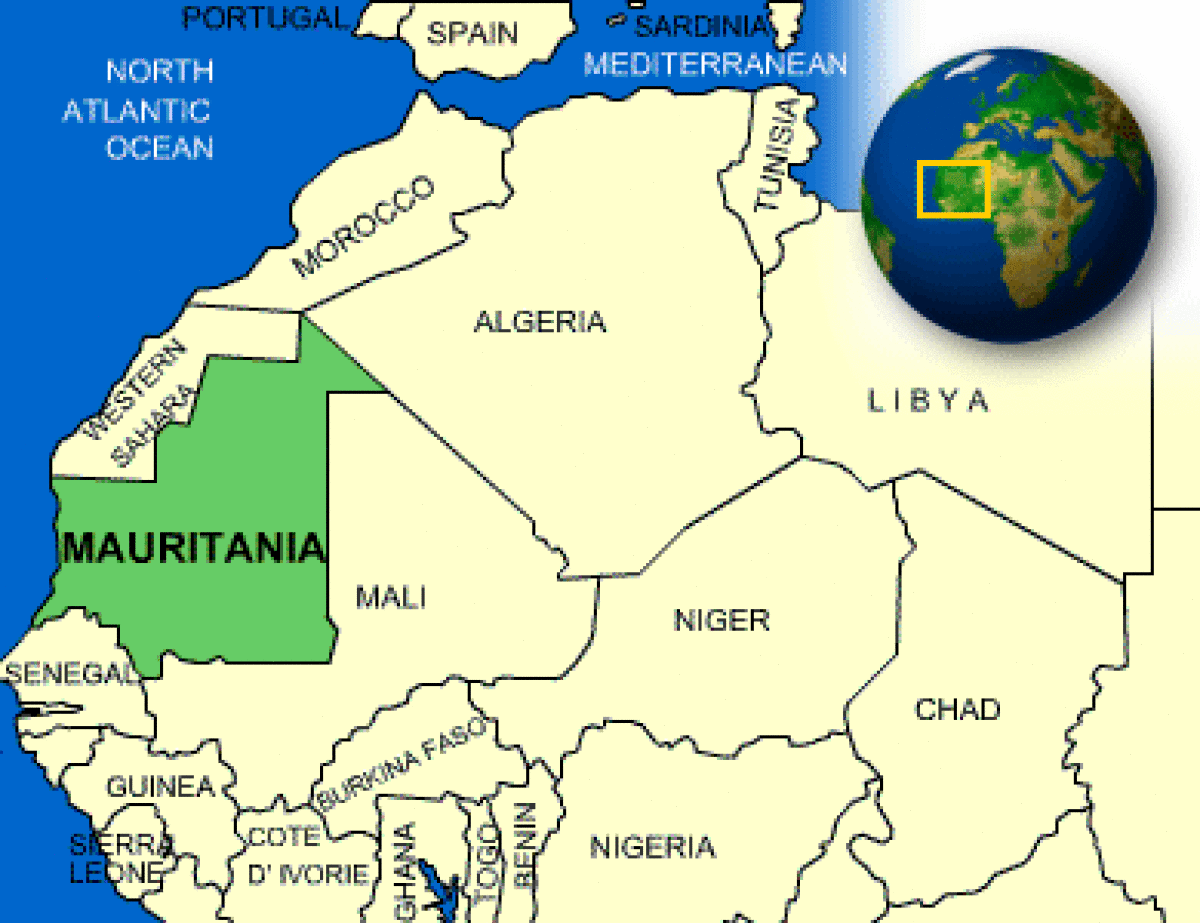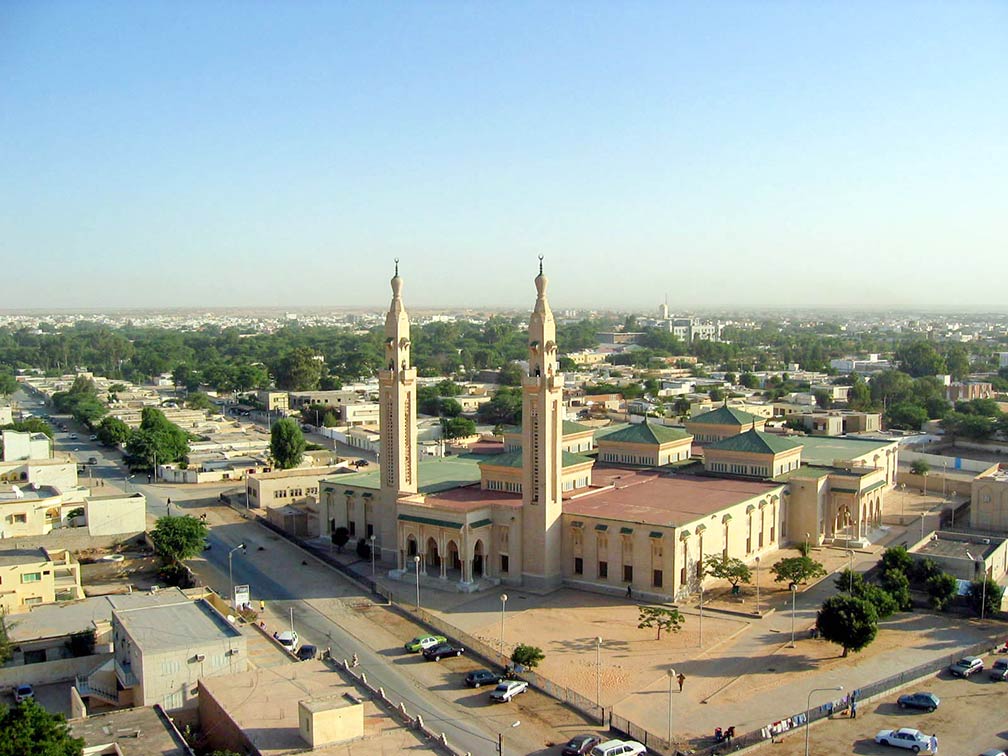Carved out of the deserts of northwestern Africa
lies the country of Mauritania. Not quite as well known as some of its
neighbors, Internet searches for this country often pull up hits for the
Mauritius islands off the western coast of Madagascar. A divided country, this
is one of those countries I’m pretty sure everything I learn about it is new.
The country is named after the Berber kingdom of
almost the same name, Mauretania, which was in power from about the 3rd
century BC to the 7th century and located pretty much in the area of
present day northern Morocco.
Mauritania is surrounded by the territory of Western
Sahara to the northwest, Algeria to the northeast, Mali to the east and south,
Senegal to the southwest, and the Atlantic Ocean to the west. The country is made of flat, arid
plains and plateaus and is mostly desert or semi-desert; it has a hot, arid
climate.
The earliest peoples, the Bafour, were nomadic and
agriculturist peoples. The Bafour along with other Berber peoples claimed to be
Yemeni in their origins. DNA tests have proven some ties between the two
peoples but some scholars have remained skeptics. Mauritania once used to
control the lands of Senegal as well, and France stepped in and slowly stating
amassing lands that were part of Mauritania (and some from Senegal), later
becoming part of French West Africa in 1920. Under French rule, the capital was
moved from Saint-Louis to its current capital of Nouakchott. Although the
French prohibited slavery under their rule, after the country gained its
independence in 1960, it was different. The southern tribes moved in from Senegal
and became clerks and administrators due to their knowledge of French and
French customs. The northern tribes were denied that power and were subjugated
and suppressed by the French military, upsetting the balance of power
previously established in their country. Today, Mauritania has a problem with
modern-day slavery even though technically slavery is outlawed on the books. The
struggle between the French and Arab influences on Mauritania has caused
tensions in the country since its independence. Massive droughts during the
early 1970s didn’t help any, and these tensions escalated to a border war
between Mauritania and Senegal in 1989. Starting in the mid-1970s, Mauritania and Morocco also had a
land dispute regarding the territory known as Western Sahara. While Mauritania
has stepped back in the deal, the UN is still waiting for a decision to be made
about whether the territory will gain statehood or not. (And I thought I was
indecisive and put things off.) Unfortunately, there have been several coups
and human rights violations in Mauritania in recent history.
The capital and largest city by far is Nouakchott.
This coastal city is home to about 958,400 people. The name is a French
spelling based on the Berber words Nawaksut, meaning “place of the winds.”
Although it’s located on the coast, the climate is hot and dry; it only
averages about 3.7” of rainfall a year. The city is home to the federal
government as well as the center for commerce, culture, and higher education.
Because of rapid growth in the city as nomadic peoples are settling in and
around the city, the city is now faced with the growing problems of not having
enough fresh water and the problem with ever-growing slums.
The story of Mauritania’s economic problems is not
unique. In fact, many African countries suffer the same dilemma. Mauritania has
a ton of natural resources, mainly in iron ore. But demand in the type of ore
it produces has declined. It also depends on agriculture and subsistence
farming, which is also subject to massive droughts, and their fishing industry
is becoming overfished in many areas. Oil was discovered in 2001, and since
then, two oil fields have been discovered, but the environment in which these
oil fields are in make extraction a difficult (and expensive) process.
By far, pretty much everyone in Mauritania is
Muslim, with the majority being Sunni. The Sufi brotherhood has also had an
impact in the country and neighboring countries as well. There are a small
number of Roman Catholics in Nouakchott. Religion is very important in
Mauritania; it’s one of the few countries in the world where atheism is
punishable by death. (And I thought atheists were hated here in the US.)
Although Arabic is the official language, and
French is still used in the media and among the educated peoples, there are
many other languages spoken in Mauritania. The most widely spoken indigenous
languages used in the country include Hassaniya, Pulaar, Imraguen, Serer,
Soninke, and Wolof.
There are a few surprising things about Mauritania
I learned: 1) Scenes from The Fifth
Element that were supposed to depict Egypt were actually filmed in
Mauritania, 2) it’s famous for its strange geological sculpture called the Eye
of Africa (also known as the Richat Structure or Eye of the Sahara), a gigantic
area of deep erosion in a bullseye-shape that is about 30 miles wide—so large
it can be seen from space more or less, 3) they also have nice beaches; incidentally,
the Bay of Nouadhibou has one of the largest ship graveyards in the world with
over 300 wrecks! The great thing is that many of these wrecks have created
artificial reefs and boosted the fish populations, which helps with the local
fishing industry. It’s a win-win more or less, in a sort of
make-the-best-of-your-situation kind of way.
Up next: art and literature








No comments:
Post a Comment